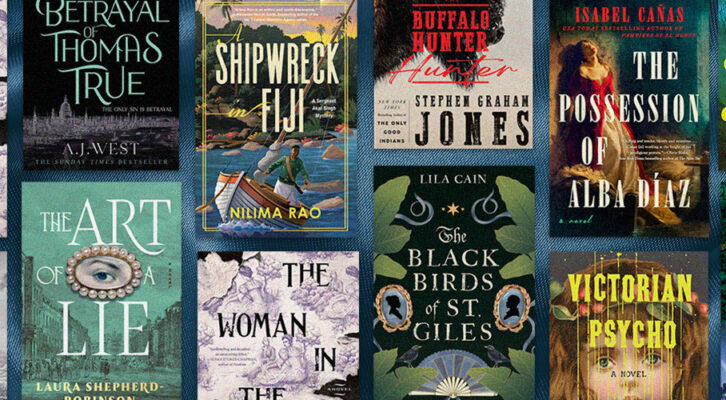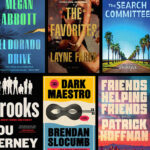If you’re writing crime fiction, you’re in the business of betrayal. Your readers open the book looking for answers, and you give them lies—at first. That’s the deal. But there’s a particular kind of magic, a sleight of hand that goes beyond the traditional red herring or unreliable narrator: it’s the plot twist you didn’t even see coming yourself.
It sounds paradoxical. After all, you’re the architect, the puppet master. But sometimes, the most effective twists are the ones that emerge, rather than those you engineer. A character does something unexpected. A throwaway detail from page seventeen becomes a smoking gun. Or maybe your own assumptions about motive, identity, and guilt start to shift as you write.
So how do you create twists that surprise your reader and yourself?
- Start with Questions, Not Answers
When I begin a book, I usually don’t know who did it. I might think I do, but often I’m wrong, and I prefer it that way. Starting with a question rather than a blueprint forces you to stay open and follow instincts instead of outlines.
This approach invites your subconscious to take the wheel. You’ll find the key to a compelling twist isn’t necessarily knowing where you’re going, but being attuned to the moments when the story wants to turn sharply. Ask yourself: What’s the least likely explanation for what’s happening here? Who seemingly has the least to gain? What if the victim isn’t who we think they are?
When you don’t lock yourself into a predetermined ending, the story has room to shift in ways that surprise even you.
- Make Your Characters Smarter Than You
One way to write a twist you didn’t see coming is to create characters who outthink you. Give them secrets you don’t know about yet. Let them act without checking in.
While writing Last One Seen, I included a character who was originally just part of the background, a member of a writing workshop, there to fill out the scene and lend weight to the feeling that the protagonist, Hannah, was being subtly excluded. The character was quiet, peripheral. She seemingly had nothing to gain by hurting anyone. I didn’t give her much thought.
But as I searched for a more satisfying ending in later drafts, she kept catching my eye. Her presence sharpened. A motive surfaced. I reread earlier scenes and realized it was all there: the unhealthy attachment to the victim, the flickers of jealousy, the simmering emotion I hadn’t consciously planted—but somehow had.
Your characters often know more than you do. You just have to listen.
- Plant Clues You Don’t Understand Yet
This is a trick I’ve borrowed from other writers: leave behind narrative breadcrumbs you haven’t yet mapped out. A strange object. An overheard line. A moment that doesn’t quite fit.
These loose threads become opportunities later. When you’re searching for a twist, you’ll often find you’ve already written it—you just didn’t recognize it at the time.
Maybe it’s a photograph that holds the key to someone’s past. A half-remembered conversation. An offhand remark that now rings with hidden meaning. Trust that your subconscious is doing work beneath the surface, and give it the material to play with.
- Use the Reader’s Expectations Against Them
Crime fiction is a genre built on expectations. Readers know the rules: the killer is introduced early, the most obvious answer is wrong, motives are buried under alibis.
Which gives you a powerful advantage.
To craft a twist no one sees coming, you don’t always have to outsmart the reader; you can let their expectations do the work. Subvert the familiar. If they’re looking for a femme fatale, give them a grieving daughter. If the alibi seems airtight, nudge the timestamp.
But be fair. Readers will forgive a twist that shocks them, if it doesn’t cheat them. The best twists feel both surprising and inevitable. They send readers flipping back through the pages muttering, “Of course.”
- Let the Draft Lead You Somewhere Dangerous
In early drafts, give yourself permission to veer off course. Kill a character you meant to keep. Change the POV. Reorder the timeline. Be reckless. Because the most surprising twists don’t come from control, they come from curiosity.
I’ve thrown out entire outlines halfway through a novel because the story wanted to go somewhere darker, stranger, riskier. But every time, the book got better. Not neater. Not safer. But truer.
- Look for the Ending in the Beginning, then Rewrite With the Twist in Mind
With Last One Seen, I rewrote the ending several times. I was circling something, but nothing landed. Finally, I went back to the beginning. I read the first lines again and asked myself: What if I turned this on its head? How could I make the ending echo backwards?
That changed everything. The twist didn’t just conclude the story, it transformed it. The beginning became a kind of time capsule, waiting to be cracked open by the final chapter.
Once you’ve discovered the twist (especially if it snuck up on you) go back and retroactively earn it. Foreshadow with a light touch. Seed early chapters with misdirection. Tweak character behavior so it tracks with the truth beneath the surface.
This is the surgical part. A good twist doesn’t just shock, it reframes. It makes the reader reinterpret everything that came before.
In the End, You’re the First Reader
If the twist surprises you, it’s far more likely to surprise your readers. Not always, some readers catch every thread, but that sense of discovery you feel as a writer? It’s contagious. It gives your story urgency, energy, pulse.
So don’t be afraid to get lost. Don’t be afraid to be wrong. Let your characters misbehave. Let your own logic betray you. That’s where the truth lives—somewhere deep in the dark, waiting for the perfect moment to reveal itself.

















